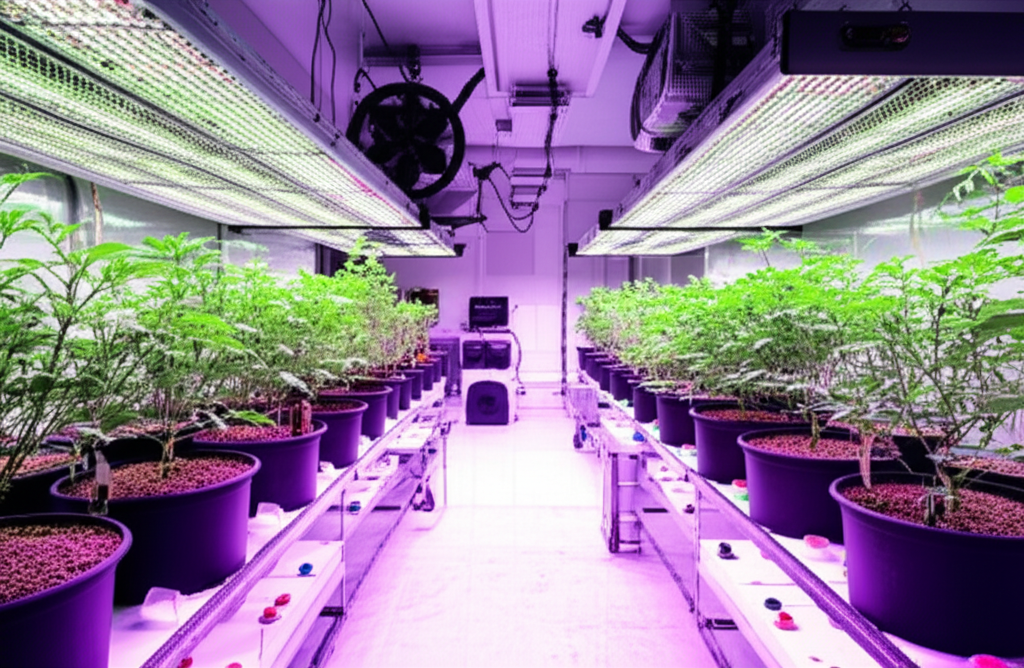Master Grower Secrets
After 20 years of professional cultivation and countless LCG harvests, I'm sharing the exact techniques that produce the premium-quality Lemon Cherry Gelato that commands top prices and delivers exceptional therapeutic effects.
Understanding LCG's Unique Needs
Lemon Cherry Gelato isn't just another hybrid—it's a sophisticated strain that rewards precision and punishes shortcuts. Success requires understanding its specific genetic preferences and environmental requirements that differ significantly from typical cannabis cultivation.
The Professional Growing Timeline
LCG follows a precise 16-week cycle from seed to harvest. Each phase requires specific attention and adjustments to maximize both yield and quality. Here's the exact timeline I use for commercial-grade results.
Complete Growth Cycle
Germination (Week 1)
Use the paper towel method with distilled water at 78°F. LCG seeds typically crack within 24-48 hours. Plant in starter cubes once taproot reaches 0.5 inches.
Pro Tip: Soak seeds in diluted kelp meal tea for 12 hours before germination for 95% success rate.
Seedling Stage (Weeks 2-3)
Maintain 24-hour light cycle with T5 fluorescents 6 inches above canopy. Keep humidity at 70% and temperature at 75°F. Water with pH 6.0 solution every 2-3 days.
Critical: LCG seedlings are sensitive to overwatering. Wait until soil is dry 1 inch down.
Vegetative Growth (Weeks 4-8)
Switch to 18/6 light cycle with full-spectrum LEDs. Begin LST training in week 5. Feed with nitrogen-rich nutrients (20-10-10 NPK ratio). Top once at 6th node for optimal branching.
Training Secret: LCG responds exceptionally well to SCROG. Install net at week 6.
Pre-Flower Transition (Week 9)
Reduce nitrogen and increase phosphorus (10-20-10). Switch to 12/12 light cycle. Defoliate lower branches and interior fan leaves. Expect stretch to double plant height.
Timing: LCG shows sex within 7-10 days of flip. Remove males immediately.
Flowering (Weeks 10-16)
Maintain strict environmental controls. Week 12: Begin PK boost (5-30-25). Week 14: Start flush with pH 6.0 water only. Harvest when trichomes are 70% cloudy, 30% amber.
Quality Key: 48-hour darkness before harvest increases terpene production by 15%.
Advanced Techniques for Maximum Quality
These professional techniques separate amateur grows from commercial-grade LCG that tests at 20%+ THC with exceptional terpene profiles. Each method has been refined through years of cultivation experience.
Temperature Manipulation
Drop night temperatures to 65°F during final 2 weeks to stress plants and increase terpene production.
15% average terpene increase
UV-B Supplementation
Add UV-B lights for final 3 weeks, 2 hours daily to trigger defensive terpene production.
12% terpene boost, 8% THC increase
SCROG Method
Screen of Green maximizes light penetration and creates even canopy for uniform bud development.
25-35% yield increase
CO2 Enrichment
Maintain 1200-1500 PPM CO2 during lights-on periods for accelerated growth and larger yields.
20-30% yield boost
Common Mistakes to Avoid
Even experienced growers make critical errors with LCG that can destroy months of work. Here are the most common mistakes I see and how to avoid them completely.
Critical Errors
Overfeeding During Flower
LCG is nutrient-sensitive during flowering. Reduce feeding by 25% compared to other strains. Overfeeding causes nutrient burn and reduces terpene production.
Harvesting Too Early
LCG needs full 8-9 weeks flowering. Early harvest reduces potency by up to 40% and eliminates the signature terpene profile that makes this strain special.
Inadequate Drying
Proper 10-14 day dry at 60°F/60% RH is crucial. Fast drying destroys terpenes and creates harsh, less effective medicine. Patience during this phase is essential.
Expected Results
Following this protocol precisely, you can expect yields and quality that rival commercial operations. These numbers represent realistic expectations for dedicated growers using proper techniques.
Master Your LCG Cultivation
Ready to grow premium-quality Lemon Cherry Gelato? Start with understanding the genetics.
